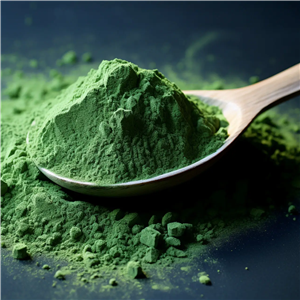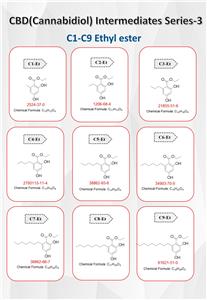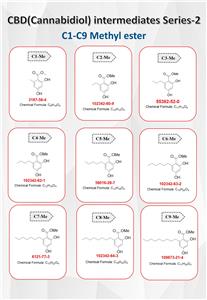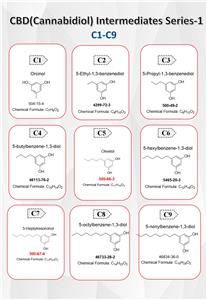Monk Fruit vs. Stevia: Which Sweetener Should You Use?
What is monk fruit?
Monk fruit is a small, green gourd that resembles a melon. It’s grown in Southeast Asia. The fruit was first used by Buddhist monks in the 13th century, hence the fruit’s unusual name.
Fresh monk fruit doesn’t store well and isn’t appealing. Monk fruit is usually dried and used to make medicinal teas. Monk fruit sweeteners are made from the fruit’s extract. They may be blended with dextrose or other ingredients to balance sweetness.
Monk fruit extract is 150 to 200 times sweeter than sugar. The extract contains zero calories, zero carbohydrates, zero sodium, and zero fat. This makes it a popular sweetener alternative for manufacturers who make low-calorie products and for the consumers who eat them.
In the United States, sweeteners made from monk fruit are classified by the
Pros
Sweeteners made with monk fruit don’t impact blood sugar levels.
With zero calories, monk fruit sweeteners are a good option for people watching their weight.
Unlike some artificial sweeteners, there’s no evidence to date showing that monk fruit has negative side effects.
There are several other pros to monk fruit sweeteners:
They’re available in liquid, granule, and powder forms.
They’re safe for children, pregnant women, and breast-feeding women.
According to a
2009 studyTrusted Source , monk fruit gets its sweetness from antioxidant mogrosides. The study found monk fruit extract has the potential to be a low-glycemic natural sweetener.
A
2013 studyTrusted Source concluded mogrosides may help reduce oxidative stress. Oxidative stress may lead to disease. Although it’s unclear how specific monk fruit sweeteners come into play, the study shows monk fruit’s potential.
Cons
Monk fruit is difficult to grow and expensive to import.
Monk fruit sweeteners are harder to find than other sweeteners.
Not everyone is a fan of monk fruit’s fruity taste. Some people report an unpleasant aftertaste.
Other cons to monk fruit sweeteners include:
Some monk fruit sweeteners contain other sweeteners such as dextrose. Depending on how the ingredients are processed, this may make the end product less natural. This may also impact its nutritional profile.
Mogrosides may stimulate insulin secretion. This may not be helpful for people whose pancreas is already overworking to make insulin.
They haven’t been on the U.S. scene very long. They’re not as well studied in humans as other sweeteners.
Stevia is 200 to 300 times sweeter than sugar. Commercial stevia sweeteners are made from a compound of the stevia plant, which is an herb from the Asteraceae family.
The use of stevia in foods is a bit confusing. The
On the other hand, the FDA has approved specific refined stevia products as GRAS. These products are made from Rebaudioside A (Reb A), a glycoside that gives stevia its sweetness. The FDA indicates products marketed as “Stevia” are not true stevia. Instead, they contain highly purified Reb A extract that’s GRAS.
Refined stevia Reb A sweeteners (called stevia in this article) have zero calories, zero fat, and zero carbs. Some contain other sweeteners such as agave or turbinado sugar.
Pros
Stevia sweeteners don’t have calories and are a good choice for people trying to lose weight.
They generally don’t raise blood sugar levels, so they’re a good sugar alternative for people with diabetes.
They’re available in liquid, granule, and powder forms.
The pros of stevia sweeteners are similar to monk fruit sweeteners.
Cons
Sweeteners with stevia are more expensive than sugar and most other artificial sweeteners.
It may cause side effects such as bloating, nausea, and gas.
Stevia has a licorice flavor and somewhat bitter aftertaste.
Stevia has several other downsides, including:
It may cause allergic reaction. If you’re allergic to any plant from the Asteraceae family such as daisies, ragweed, chrysanthemums, and sunflowers, you shouldn’t use stevia.
It may be blended with higher-calorie or higher-glycemic sweeteners.
Most stevia products are highly refined.
When choosing a sweetener, ask yourself these questions:
Do you just need it to sweeten your morning coffee or tea, or do you plan to bake with it?
Are you diabetic or concerned about side effects?
Does it bother you if your sweetener is not 100 percent pure?
Do you like the taste?
Can you afford it?
Monk fruit and stevia are versatile. Both can be substituted for sugar in beverages, smoothies, sauces, and dressings. Keep in mind, less is more when it comes to these sweeteners. Start with the least amount and add more to taste.
Monk fruit and stevia may be used for baking because both are heat stable. How much you use depends on the blend and if it contains other sweeteners. In most cases, you’ll need much less monk fruit or stevia than white sugar. Be sure to read the manufacturer’s instructions carefully before using, or you may end up with something inedible.
Monk fruit and stevia are nonnutritive sweeteners. This means they have little-to-no calories or nutrients. Both are marketed as natural alternatives to sugar. This is true to a point. Monk fruit is typically not as refined as stevia, but may contain other ingredients. The stevia you buy in the grocery store is vastly different from the stevia you grow in your backyard. Even so, stevia and monk fruit sweeteners are more natural choices than artificial sweeteners containing aspartame, saccharine, and other synthetic ingredients.
If you’re diabetic or trying to lose weight, read monk fruit or stevia product labels carefully to see if higher-calorie and higher-glycemic sweeteners were added.
In the end, it all comes down to taste. If you don’t like the taste of monk fruit or stevia, their pros and cons don’t matter. If possible, try them both to see which you prefer.
From https://www.healthline.com/health/food-nutrition/monk-fruit-vs-stevia, Medically reviewed by Natalie Butler, R.D., L.D. — Written by Annette McDermott




